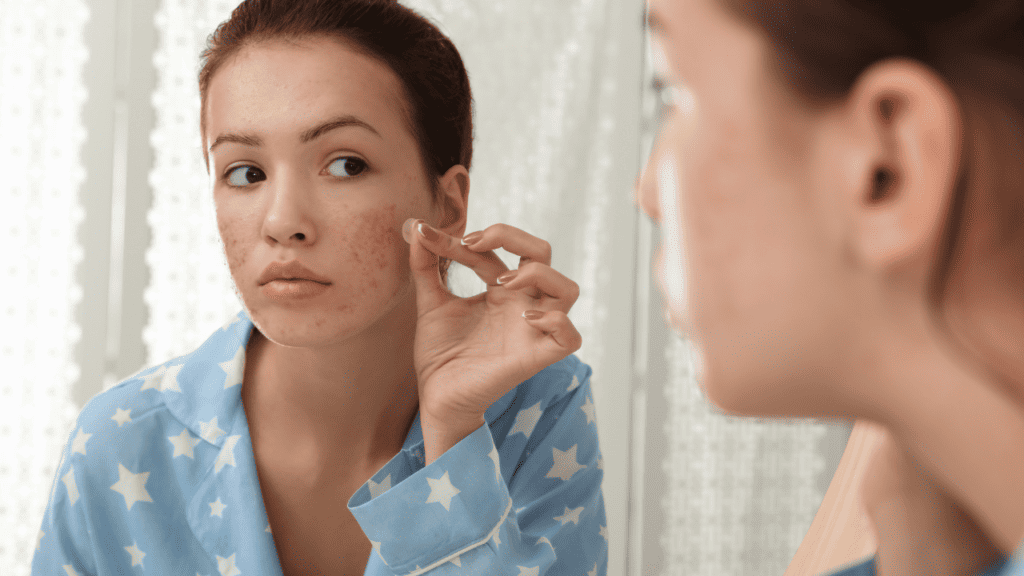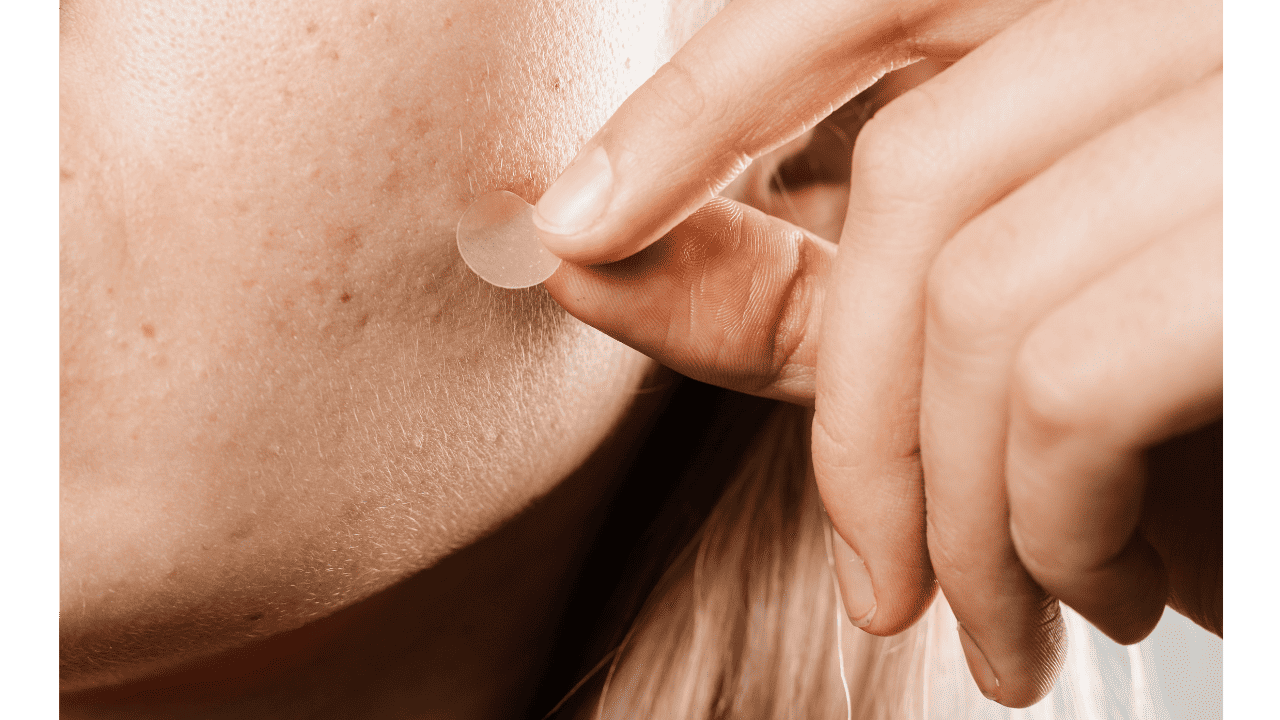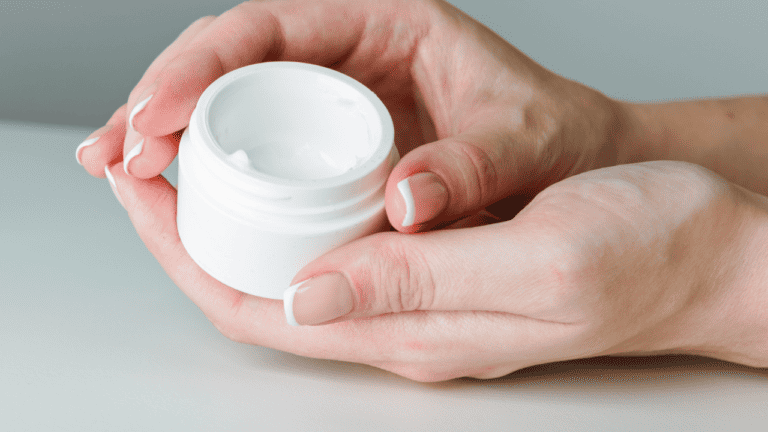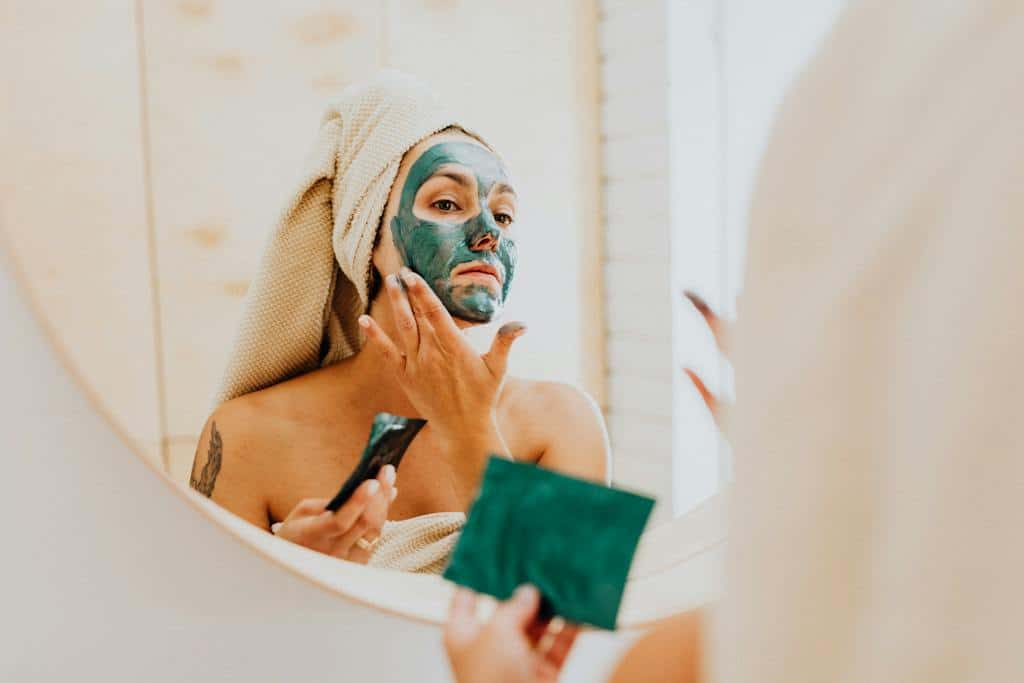Pimple patches have become a popular solution for acne-prone skin. They work by absorbing the pus and oil from the pimple, thus reducing inflammation and promoting healing. However, while they are generally safe to use, there are certain situations where they may not be appropriate.
One such situation is when the pimple is not yet ready to be popped. Pimple patches are meant to be used on pimples that have already come to a head. Applying a patch on a pimple that is not yet ripe may cause further irritation and delay the healing process. It is best to wait until the pimple has formed a whitehead before using a patch.
Another situation where pimple patches may not be suitable is when the pimple is located on a sensitive or delicate part of the skin. Patches can be quite adhesive, and when applied to sensitive areas, they may cause irritation or even damage to the skin. It is important to be cautious when using pimple patches on areas such as the eyelids, lips, or nostrils.
Key Takeaways
- Pimple patches should only be used on pimples that have already come to a head.
- Pimple patches may not be suitable for use on sensitive or delicate areas of the skin.
- It is important to be cautious when using pimple patches and to follow the instructions carefully.
Understanding Pimple Patches

Pimple patches are a type of acne treatment that is applied directly to the affected area. They are designed to absorb excess oil and pus from the pimple, which helps to reduce inflammation and promote healing. In this section, we will discuss the different types of pimple patches and how they work.
Types of Pimple Patches
There are two main types of pimple patches: hydrocolloid patches and acne patches. Hydrocolloid patches are made from a gel-like material that is designed to absorb excess oil and pus from the pimple. They are often transparent and can be worn during the day or overnight. Acne patches, on the other hand, are infused with ingredients like salicylic acid and tea tree oil, which help to fight acne-causing bacteria.
How Pimple Patches Work
Hydrocolloid patches work by creating a moist environment around the pimple, which helps to draw out excess oil and pus. This can help to reduce inflammation and promote healing. Acne patches, on the other hand, work by delivering active ingredients like salicylic acid and tea tree oil directly to the affected area. These ingredients help to unclog pores and kill acne-causing bacteria.
Overall, pimple patches can be an effective way to treat acne. However, it is important to note that they may not be suitable for everyone. For example, if you have sensitive skin, you may want to avoid using acne patches that contain harsh ingredients like salicylic acid. Additionally, if you have a deep, cystic pimple, a pimple patch may not be effective in treating it. In these cases, it is best to consult with a dermatologist to determine the best course of treatment.
Appropriate Usage of Pimple Patches

Pimple patches have become a popular solution for treating acne, especially for those who prefer a non-invasive method. However, it is important to understand when to apply a pimple patch and how to select the right one for your skin type.
When to Apply a Pimple Patch
Pimple patches are most effective when used on whiteheads or pimples that have already come to a head. The patch can help to absorb the excess oil and pus from the pimple, reducing inflammation and promoting faster healing.
It is not recommended to use a pimple patch on blackheads or closed comedones, as the patch will not be able to penetrate the skin to effectively treat the underlying issue. Additionally, if the pimple is still in the early stages of development, the patch may not be effective in preventing it from fully forming.
Selecting the Right Pimple Patch
When selecting a pimple patch, it is important to consider the type of patch and the ingredients used. There are two types of pimple patches: hydrocolloid and medicated. Hydrocolloid patches are designed to absorb excess oil and pus, while medicated patches contain ingredients such as salicylic acid or tea tree oil to help treat the pimple.
It is also important to consider the size and thickness of the patch. A patch that is too small may not fully cover the pimple, while a patch that is too thick may be noticeable under makeup.
Individuals with sensitive skin should also be cautious when selecting a pimple patch, as some ingredients may cause irritation or allergic reactions. It is recommended to patch test a small area of skin before applying the patch to the affected area.
In conclusion, pimple patches can be an effective solution for treating acne, but it is important to use them appropriately. When selecting a pimple patch, consider the type, size, and ingredients, and only apply the patch to whiteheads or pimples that have come to a head.
When to Avoid Pimple Patches

Pimple patches are a popular skincare product designed to treat acne by absorbing excess oil and pus from pimples. While they are generally safe and effective for most people, there are certain situations when using a pimple patch may not be the best option. Here are some types of acne, skin conditions, and skincare products that may not be suited for pimple patches.
Types of Acne Not Suited for Patches
Pimple patches work best on surface-level blemishes such as whiteheads and blackheads. However, they may not be as effective on deeper, cystic acne. Cystic acne is a severe form of acne that occurs when oil and dead skin cells clog hair follicles, leading to painful, inflamed bumps that can last for weeks or even months. Since cystic acne occurs deep beneath the skin’s surface, pimple patches may not be able to penetrate deep enough to provide relief.
Skin Conditions and Sensitivities
Pimple patches are designed to be gentle and non-irritating, but they may not be suitable for people with sensitive skin or other skin conditions. If you have eczema, psoriasis, rosacea, or other skin conditions, using a pimple patch may exacerbate your symptoms. Additionally, if you have an open wound or infection, applying a pimple patch may further irritate the area and delay the healing process.
Interactions with Other Skincare Products
Pimple patches are designed to be used on clean, dry skin, and may not work as well if applied over other skincare products such as moisturizers, serums, or makeup. Additionally, some skincare products may contain ingredients that can irritate the skin or interfere with the adhesive on the pimple patch. If you are using other skincare products, it is best to consult with a dermatologist or esthetician before using a pimple patch.
In conclusion, while pimple patches can be a helpful tool in treating acne, there are certain situations when they may not be the best option. It is important to consider your skin type, the type of acne you have, and any other skincare products you are using before applying a pimple patch. If you are unsure whether a pimple patch is right for you, it is always best to consult with a skincare professional.
Proper Skin Preparation

To ensure that a pimple patch adheres properly and effectively, proper skin preparation is crucial. This involves cleansing the skin and exfoliating to unclog pores.
Cleansing Before Patch Application
Before applying a pimple patch, it is important to cleanse the skin thoroughly. This removes any dirt, oil, or makeup that may interfere with the patch’s adhesion. A gentle cleanser should be used to avoid irritating the skin. It is also important to avoid using any harsh scrubs or exfoliants, as this can damage the skin and make it more difficult for the patch to adhere properly.
Exfoliating to Unclog Pores
Exfoliating the skin can help to remove dead skin cells and unclog pores, allowing the patch to adhere more effectively. However, it is important to use a gentle exfoliant and avoid over-exfoliating, as this can damage the skin and make it more susceptible to irritation. Exfoliating once or twice a week is usually sufficient.
By properly preparing the skin before applying a pimple patch, individuals can ensure that the patch adheres effectively and helps to treat the pimple.
Post-Application Care
After applying a pimple patch, it is important to take proper care of the area to ensure the best possible healing process. This includes monitoring the healing process and managing expectations.
Monitoring the Healing Process
It is important to monitor the healing process of the pimple after applying the patch. The patch creates a moist environment, which helps to speed up the healing process. However, it is important to note that not all pimples are the same. Some pimples may be more severe and require additional wound care. If the pimple is a pustule, it may take longer to heal and may require additional treatment.
Managing Expectations
While pimple patches are an effective way to treat pimples, it is important to manage expectations. Pimple patches can help to reduce the size of the pimple and minimize redness, but they may not completely eliminate the pimple. It is important to remember that the patch is an adhesive and may cause irritation to the skin if left on for too long.
To ensure the best possible outcome, it is recommended to remove the patch after 6-8 hours. If the patch is left on for too long, it may cause additional irritation to the skin. If the pimple is not healing or is getting worse, it is important to seek medical attention.
In summary, after applying a pimple patch, it is important to monitor the healing process and manage expectations. Pimple patches can be an effective way to treat pimples, but it is important to take proper care of the area to ensure the best possible outcome.
Potential Complications
Pimple patches are generally safe to use, but there are potential complications that users should be aware of.
Risks of Overuse or Misuse
Overuse or misuse of pimple patches can lead to skin irritation, redness, and dryness. Pimple patches should not be left on for longer than recommended, as this can cause damage to the skin and increase the risk of scarring. It is important to follow the instructions provided with the patch to avoid any adverse reactions.
Signs of Adverse Reactions
While pimple patches are generally safe, some people may experience adverse reactions. Signs of an adverse reaction include redness, swelling, itching, and pain. In rare cases, an allergic reaction may occur, which can cause severe swelling and difficulty breathing. If any of these symptoms occur, the patch should be removed immediately, and medical attention should be sought.
Infection is another potential complication of pimple patches. If the skin is not properly cleaned before applying the patch, bacteria can become trapped under the patch and cause an infection. Signs of infection include redness, swelling, and pus. If any of these symptoms occur, the patch should be removed, and medical attention should be sought.
Overall, pimple patches are a safe and effective way to treat acne. However, it is important to use them properly and be aware of potential complications. If you have any concerns about using pimple patches, it is always best to consult with a dermatologist.
Alternative and Complementary Treatments
When pimple patches are not the right fit for an individual, there are alternative and complementary treatments that can be used to help combat acne. These treatments can be used alone or in combination with pimple patches to provide relief from acne symptoms.
Topical Treatments
Topical treatments can be used to help reduce inflammation and redness associated with acne. Benzoyl peroxide is a common topical treatment that can be used to kill the bacteria that causes acne. Adapalene is another topical treatment that can be used to reduce inflammation and unclog pores.
Niacinamide is a form of vitamin B3 that can be used topically to help reduce inflammation and redness. Hyaluronic acid is another topical treatment that can be used to help hydrate the skin and reduce the appearance of fine lines and wrinkles.
Oral Medications
Oral medications can be used to help reduce inflammation and redness associated with acne. Cortisone is a common oral medication that can be used to reduce inflammation and redness. Antibiotics can also be used to help kill the bacteria that causes acne.
Tretinoin is a form of vitamin A that can be used orally to help reduce inflammation and unclog pores. Isotretinoin is another oral medication that can be used to help reduce inflammation and unclog pores. Spironolactone is an oral medication that can be used to help reduce oil production in the skin.
Professional Dermatological Procedures
Professional dermatological procedures can be used to help reduce inflammation and redness associated with acne. Chemical peels can be used to help exfoliate the skin and reduce the appearance of fine lines and wrinkles. Laser therapy can also be used to help reduce inflammation and redness associated with acne.
In conclusion, when pimple patches are not the right fit for an individual, there are alternative and complementary treatments that can be used to help combat acne. These treatments can be used alone or in combination with pimple patches to provide relief from acne symptoms.
Choosing Quality Pimple Patches
When it comes to pimple patches, choosing a quality product is essential to ensure maximum effectiveness and safety. Here are some factors to consider when selecting a pimple patch:
Ingredients to Look For
One of the most important things to consider when choosing a pimple patch is the ingredients. Look for patches that contain hydrocolloid, a substance that helps to absorb excess oil and pus from the pimple. This ingredient is found in popular pimple patches like Cosrx Acne Pimple Master Patch.
In addition to hydrocolloid, some patches also contain antibacterial properties like tea tree oil or salicylic acid. These ingredients can help to kill bacteria and prevent further breakouts. However, it is important to note that some people may be sensitive to these ingredients and may experience irritation or allergic reactions.
Reading and Interpreting Reviews
Reading reviews from other users can be a helpful way to gauge the effectiveness of a pimple patch. Look for reviews that mention the patch’s ability to absorb excess oil and pus, as well as its overall effectiveness in reducing the size and redness of the pimple.
It is also important to look for reviews that mention any potential issues with the patch, such as irritation or allergic reactions. Keep in mind that everyone’s skin is different, so what works for one person may not work for another.
When interpreting reviews, it is important to look for patterns and trends rather than just focusing on individual experiences. If multiple users mention the same issue with a particular patch, it may be a sign that the product is not as effective or safe as advertised.
By considering these factors when choosing a pimple patch, users can ensure that they are selecting a high-quality product that will effectively and safely treat their acne.
Frequently Asked Questions
Are there risks to using pimple patches on open or infected skin?
Yes, there are risks to using pimple patches on open or infected skin. Pimple patches are designed to be used on closed, mature pimples. When applied to open or infected skin, the patch can trap bacteria and other irritants against the skin, which can lead to further irritation and infection. It is important to avoid using pimple patches on open or infected skin and to consult a dermatologist if you have any concerns about your skin.
How can you tell if a pimple is not suitable for a patch?
Not all pimples are suitable for a patch. Pimples that are open, weeping, or infected should not be covered with a patch. Additionally, if a pimple is too small or not yet mature, a patch may not be effective. It is important to read the instructions carefully and to only use patches on pimples that are suitable for the product.
Is there a limit to how often you can apply acne patches?
While there is no specific limit to how often you can apply acne patches, it is important to follow the instructions on the product packaging. Overuse of acne patches can lead to skin irritation and dryness. It is also important to give your skin time to breathe between applications of acne patches. If you have any concerns about how often to use acne patches, consult a dermatologist.






